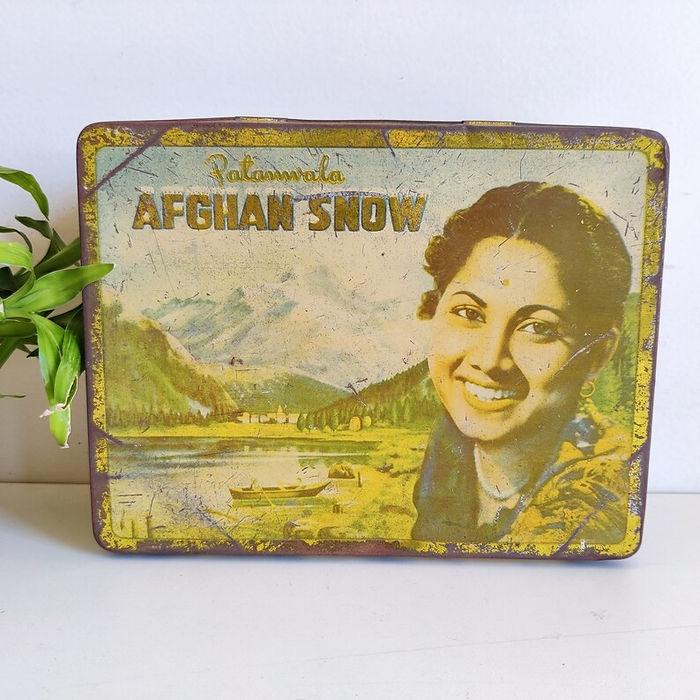India’s first beauty cream was named by a King and endorsed by Gandhi. It was advertised as many things but never as a complexion lightener.
In the rich mosaic of Indian commercial history, few products boast as intriguing a backstory as Afghan Snow, India’s first beauty cream.
Born from a serendipitous moment in 1919 and named by a visiting monarch, this brand not only shaped beauty standards but also became a cultural icon, bridging royal allure with the ethos of the Swadeshi movement.
Here’s a closer look at the legacy of Afghan Snow and its significance in the beauty industry.
The Royal Beginnings of Afghan Snow
The inception of Afghan Snow is a tale of unexpected inspiration and royal endorsement. During a 1919 visit to Bombay, King Zaheer Shah of Afghanistan was presented with various products by Ebrahim Sultanali Patanwala, a visionary entrepreneur from Rajasthan.
Among these was an unnamed jar of white cream that struck a chord with the king, reminding him of the snowy landscapes of Afghanistan. Upon his comment, Patanwala seized the moment to name the cream “Afghan Snow,” a moniker that the king graciously sanctioned.
More Than Just a Beauty Cream
Afghan Snow was marketed as an all-purpose cream, a pioneering approach in the early 20th century. Its versatility as a make-up base, moisturizer, and sunscreen catered to the holistic beauty needs of Indian women.
Notably, its advertising steered clear of the colourism that later brands would embrace. Instead, Afghan Snow focused on nourishing and cleansing the skin, enhancing natural beauty without altering one’s inherent complexion.

A Cultural Staple and Gandhian Endorsement
As the Swadeshi movement gathered steam, promoting Indian goods over foreign ones, Afghan Snow mistakenly came under scrutiny as a foreign product.
This prompted Patanwala to seek support from Mahatma Gandhi, who not only cleared the misunderstanding but also endorsed the cream in his publications, recognizing it as a true product of India.
Glamour and the Golden Era
Afghan Snow became synonymous with glamour and high society in mid-20th century India. It sponsored the first Miss India pageant in 1952, boosting its visibility and appeal.
The cream was a fixture at elite gatherings, often attended by celebrities like Nargis and Raj Kapoor and endorsed by leading actresses of the era including Devika Rani and Poonam Dhillon.

The Decline of a Giant
Despite its early dominance and beloved status, Afghan Snow could not withstand the competitive pressures of the modern beauty market. By the 1980s, new multinational brands with larger marketing budgets and modern packaging began to overshadow it.
The changing market dynamics and the introduction of products emphasizing fairness as beauty standards contributed to its gradual decline.

Legacy and Current Status
Today, Afghan Snow exists as a nostalgic relic of the past, cherished by those who remember its glory days. The Patanwala buildings in Mumbai, the original sites of production and residence, still stand as monuments to its once-great production scale.
Afghan Snow’s story is not just about a beauty cream; it’s a testament to India’s entrepreneurial spirit, cultural shifts, and the historical interplay of commerce and nationalism.
In a world where beauty standards continue to evolve, Afghan Snow remains a reminder of a time when a simple cream could capture the imagination of a nation, endorsed by a king and a Mahatma alike.

